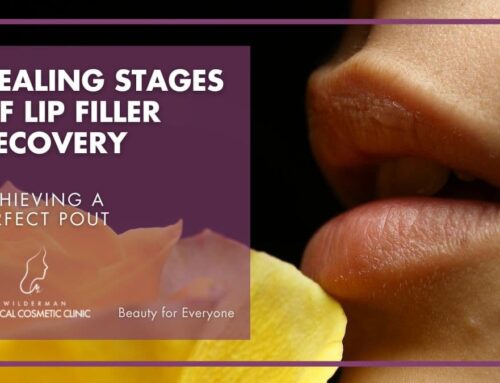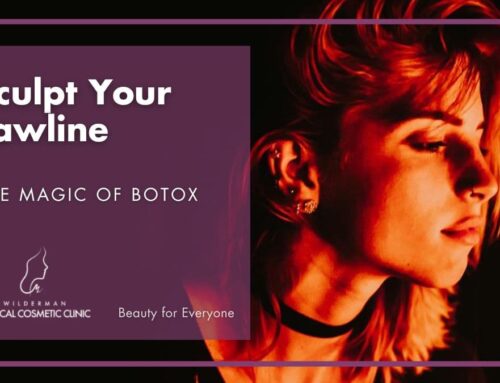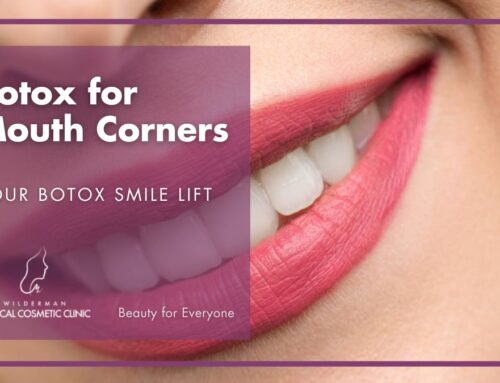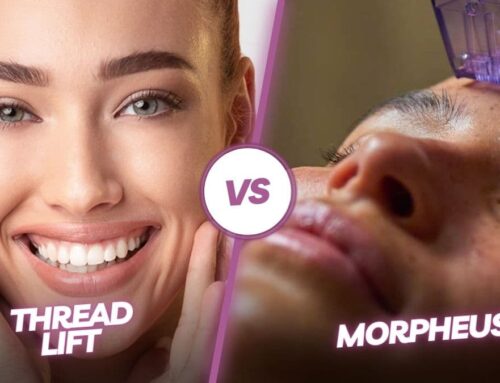What is the safest filler for the face?
Ensuring Safety: The Best Face Fillers Explained
Facial fillers are cosmetic substances injected into the skin to restore volume, smooth wrinkles, and enhance facial contours. These fillers can temporarily reduce signs of aging and improve overall facial appearance when administered by qualified professionals.
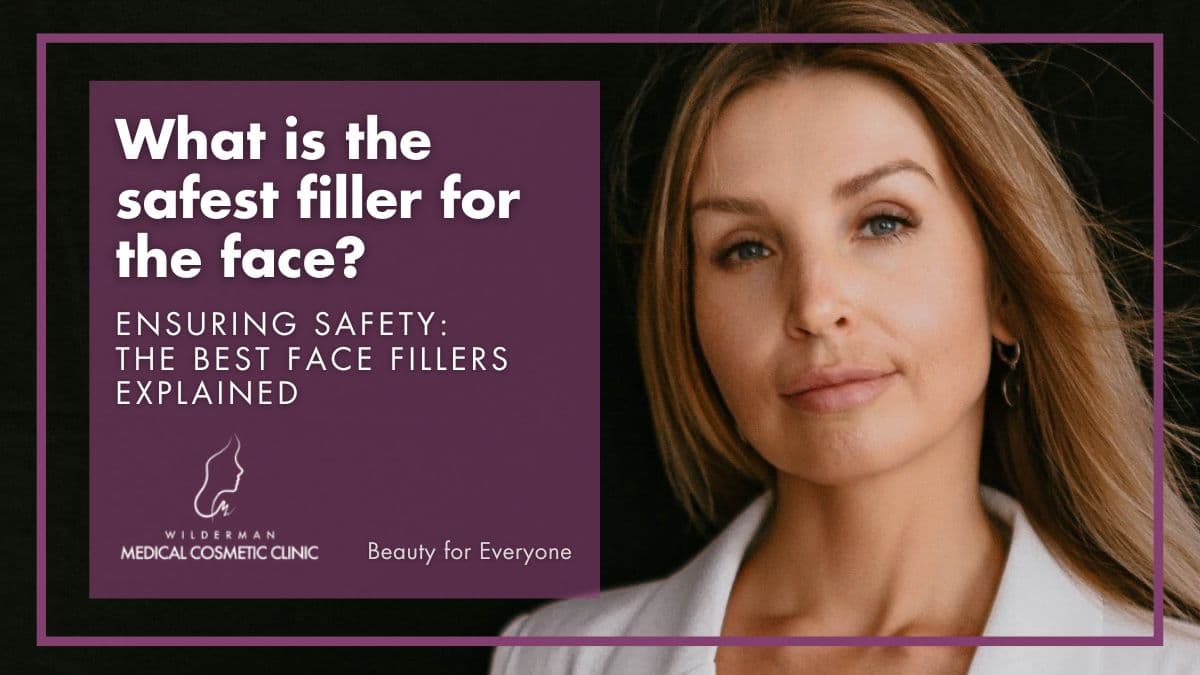
Get immediate answers to your questions about treatment options, costs, expected outcomes, and more.
- Expert Diagnosis
- Customized Treatment Plans
- No Obligation
- Comfort and Privacy
- Immediate Answers
FDA-approved dermal fillers
The safety of facial fillers depends on various factors, including the specific filler used, the expertise of the practitioner administering the treatment, and the individual’s medical history.
Here are the FDA-approved dermal fillers:
- Hyaluronic acid (HA) – These fillers are made from a synthetic form of a substance that is naturally found in the body. HA fillers are considered safe because they are biocompatible, meaning that the body does not typically react negatively to the filler. HA fillers are also reversible, as they can be dissolved with hyaluronidase if necessary. In addition to addressing wrinkles and fine lines, HA fillers can be used to enhance volume in areas such as the lips, cheeks, and jawline. The results of HA fillers typically last between six months to a year, depending on the specific product used and the area treated.
- Calcium hydroxylapatite (CaHA) – These fillers are made from a substance that occurs naturally in the body, primarily in bones and teeth. CaHA fillers are considered safe because the substance is biocompatible and does not typically cause an allergic reaction. CaHA fillers are typically used to address deeper wrinkles and folds and to enhance volume in areas such as the cheeks. CaHA fillers provide longer-lasting results than HA fillers, typically lasting between 12 and 18 months. However, CaHA fillers are not easily reversible, and careful injection techniques are required to achieve optimal results.
- Poly-L-lactic acid (PLLA) – These fillers are made from a synthetic substance that stimulates the production of collagen, a protein that provides structure and support to the skin. PLLA fillers are considered safe when used by a skilled injector and can provide long-lasting results. PLLA fillers are typically used to address volume loss in the cheeks, temples, and lower face. Sculptra, a commonly used PLLA filler, requires a series of injections spaced several weeks apart to achieve optimal results. The results of Sculptra can last up to two years, making it a longer-lasting option than HA or CaHA fillers. However, PLLA fillers are not easily reversible, and lumps or bumps may develop that require correction.
- Polymethyl Methacrylate (PMMA) – Other types of fillers, such as Polymethyl Methacrylate (PMMA) and silicone, are available but are generally considered riskier. PMMA fillers contain tiny beads that are suspended in a gel-like substance and can provide long-lasting results. However, PMMA fillers are not reversible and may cause complications such as infection, inflammation, or migration of the filler over time. Silicone fillers can also provide long-lasting results, but they carry a risk of complications such as infection, inflammation, or granulomas, which are small lumps that develop under the skin.
Are you a good candidate?
While facial fillers are generally safe, certain individuals should exercise caution or avoid them altogether. People who should not go for facial fillers include:
Pregnant or Breastfeeding Women: The safety of fillers during pregnancy and breastfeeding is not well-established, so it’s typically recommended to avoid them during this time.
Allergies: Those allergic to the ingredients in the filler, especially if it’s a component like hyaluronic acid, should avoid these fillers.
Skin Infections or Inflammation: If there is an existing skin infection or inflammation at the injection site, it’s advisable to postpone filler treatments until the skin has healed.
Autoimmune Disorders: People with autoimmune conditions may have compromised immune systems, and the use of fillers can potentially lead to adverse reactions. Consultation with a healthcare professional is crucial in such cases.
Blood Clotting Disorders: Individuals with blood clotting disorders may be at an increased risk of bruising and bleeding at the injection site.
Certain Medications: Some medications can interfere with the healing process or increase the risk of complications. It’s important to discuss current medications with a healthcare provider before getting facial fillers.
History of Keloid Scarring: People with a tendency to develop keloid scars may be at a higher risk of abnormal scarring after filler injections.
Unrealistic Expectations: Those with unrealistic expectations or unclear motivations for undergoing the procedure may not be suitable candidates. A thorough consultation with a qualified practitioner is essential to set realistic goals.
Always consult with a qualified healthcare professional or a licensed practitioner to assess individual health factors and determine if facial fillers are a safe and appropriate option.
For whom would this treatment be suitable?
Facial filler procedures may be suitable for individuals with certain cosmetic concerns and overall good health. Potential candidates for facial fillers include:
- Volume Loss: Individuals experiencing volume loss in the face due to aging may benefit from fillers to restore fullness and address sagging or hollow areas.
- Fine Lines and Wrinkles: Those with fine lines and wrinkles, especially around the eyes, mouth, and forehead, can use fillers to soften and smooth these areas.
- Facial Contouring: People seeking improved facial contours, such as enhanced cheekbones or a more defined jawline, may find fillers beneficial.
- Scar Improvement: Fillers can be used to improve the appearance of certain types of scars, particularly those resulting from acne or injury.
- Asymmetry Correction: Individuals with facial asymmetry may use fillers to achieve a more balanced and harmonious facial appearance.
- Under-Eye Hollows: Fillers can address the hollows or dark circles under the eyes, providing a rejuvenated and refreshed look.
- Non-Surgical Nose Job: Some individuals may choose fillers for a non-surgical nose job to address certain nasal irregularities or improve the nose’s appearance without surgery.
- Lip Enhancement: Those desiring fuller lips or wanting to correct asymmetry in the lips can use fillers for lip augmentation.
- Preventive Anti-Aging: Some individuals choose fillers as a preventive measure to address early signs of aging and maintain a youthful appearance.
Benefits of facial fillers
Facial fillers offer several benefits for individuals seeking non-surgical cosmetic enhancements:
- Natural-Looking Results: When administered by a skilled professional, fillers can produce natural-looking results that enhance facial features without appearing overly artificial.
- Quick and Convenient: Facial filler procedures are typically quick, often taking less than an hour, and usually require minimal downtime. This makes them a convenient option for individuals with busy schedules.
- Customizable Treatments: Different types of fillers and injection techniques allow for customized treatments to address specific concerns, providing tailored solutions for each individual.
- Non-Surgical Alternative: Facial fillers provide a non-surgical alternative to address signs of aging, allowing individuals to achieve cosmetic improvements without undergoing surgery.
- Minimal Discomfort: Most fillers contain a local anesthetic to minimize discomfort during the injection process. Additionally, topical numbing agents may be applied for further comfort.
- Gradual Results with Some Fillers: Certain fillers, such as those containing poly-L-lactic acid, stimulate collagen production over time, leading to gradual and long-lasting improvements in skin texture and elasticity.
- Versatility: Facial fillers can be used to address a variety of concerns, including lines, wrinkles, volume loss, and contouring, making them a versatile option for facial rejuvenation.
- Reversible in Some Cases: Hyaluronic acid fillers can be partially or fully reversed using an enzyme called hyaluronidase if there is a need to adjust or undo the results.
It’s important to note that individual experiences may vary, and the safety and effectiveness of facial fillers depend on factors such as the choice of filler, the expertise of the practitioner, and the individual’s health.
What are the precautions that need to be taken?
Before and after getting facial fillers, individuals should consider the following precautions to ensure a safe and satisfactory experience:
Choose a Qualified Practitioner: Seek treatment from a qualified and experienced skin care professional, such as a licensed practitioner who specializes in facial aesthetics.
Medical History Disclosure: Provide a comprehensive medical history to the practitioner, including any allergies, medications, or medical conditions. This information helps determine the suitability of the procedure.
Discuss Expectations: Communicate your goals and expectations with the practitioner during the consultation to ensure a shared understanding of the desired outcomes.
Avoid Blood-Thinning Substances: Refrain from using blood-thinning medications, supplements, or substances like aspirin and certain herbal supplements, as they can increase the risk of bruising.
Limit Alcohol Consumption: Reduce alcohol intake in the days leading up to the procedure, as alcohol can contribute to dehydration and increase the risk of bruising.
No Smoking: Avoid smoking before and after the procedure, as smoking can impair the healing process and increase the risk of complications.
Follow Aftercare Instructions: Adhere to post-treatment instructions provided by the practitioner, including any recommendations for activities to avoid, such as intense physical exercise and exposure to excessive heat or sunlight.
Monitor for Adverse Reactions: Be vigilant for signs of adverse reactions, such as excessive swelling, redness, or persistent discomfort. Contact the practitioner promptly if any concerns arise.
Sun Protection: Protect the treated area from sun exposure by using sunscreen with a high SPF. Sun protection helps prevent hyperpigmentation and supports proper healing.
Avoid Massaging Treated Areas: Refrain from massaging or manipulating the treated areas unless specifically instructed by the practitioner. Improper handling can affect the distribution of the filler.
Hydration: Maintain adequate hydration before and after the procedure, as hydration supports overall skin health and recovery.
Always consult with the skincare professional performing the procedure to receive personalized advice based on your specific circumstances.
Are there any side effects?
Yes, like any medical procedure, facial filler injections can be associated with certain side effects. While many people tolerate the treatment well, individual experiences can vary. Common side effects are generally mild and temporary, and they may include:
Swelling: Some swelling at the injection sites is common and usually resolves within a few days.
Bruising: Bruising may occur, particularly if blood-thinning medications or supplements were not avoided before the procedure. Bruising is typically temporary and fades over time.
Redness: Temporary redness at the injection sites is normal and usually subsides shortly after the procedure.
Tenderness: The treated areas may be tender or sensitive to the touch for a short period.
Discomfort or Pain: Some individuals may experience mild discomfort or pain, which is usually temporary. Over-the-counter pain relievers can help manage this.
Lumpiness or Bumps: Occasionally, small lumps or bumps may develop at the injection sites. These are usually temporary and can often be massaged out by the practitioner.
Allergic Reactions: While rare, allergic reactions to filler components can occur. It’s important to discuss any known allergies with your healthcare provider before the procedure.
Infection: Infection at the injection site is a rare but serious complication. Strict adherence to sterile techniques and post-treatment care guidelines helps minimize this risk.
Asymmetry or Uneven Results: In some cases, there may be slight asymmetry or unevenness in the results. This can often be adjusted during follow-up appointments.
Skin Discoloration: Temporary skin discoloration, known as hyperpigmentation or hypopigmentation, may occur but usually resolves on its own.
It’s crucial to choose a qualified and experienced practitioner to minimize the risk of complications. Additionally, following pre- and post-treatment instructions provided by the healthcare provider can help optimize safety and outcomes. If you experience severe or persistent side effects, such as prolonged swelling, severe pain, or signs of infection, it’s important to contact your healthcare provider promptly.
How do Facial Fillers work?
Fillers add volume, smooth wrinkles, and enhance facial contours
The mechanism of action of facial fillers varies depending on the type of filler used. However, most fillers work by adding volume to the treated areas, smoothing wrinkles, and enhancing facial contours. Here are some common mechanisms of action for different types of facial fillers:
Hyaluronic Acid (HA) Fillers: HA is a naturally occurring substance in the skin that attracts and retains water, contributing to hydration and volume. HA fillers, such as Restylane, are injected into the skin, attracting water molecules to the area, and plumping and smoothing wrinkles.
Calcium Hydroxylapatite (CaHA) Fillers: CaHA is a mineral-like compound found in bones. Fillers like Radiesse containing CaHA provide immediate volume by lifting and filling wrinkles. Additionally, they stimulate collagen production over time, contributing to longer-lasting results.
Poly-L-Lactic Acid (PLLA) Fillers: PLLA is a biocompatible and biodegradable synthetic substance. Sculptra, a PLLA filler, stimulates the production of collagen in the skin over time. The gradual increase in collagen helps improve skin texture and volume.
Polymethylmethacrylate (PMMA) Fillers: PMMA microspheres are suspended in a gel-like substance. Fillers like Bellafill containing PMMA provide immediate volume, and the microspheres stimulate collagen production for longer-lasting effects.
Autologous Fat Transfer: Fat is harvested from the patient’s own body (commonly from areas like the abdomen or thighs) and purified before being injected. The transplanted fat adds volume to the treated areas, improving contour and addressing wrinkles. Some of the transplanted fat establishes a blood supply for long-term survival.
Conclusion
Facial fillers offer non-surgical solutions for rejuvenation. Administered by qualified practitioners, they provide immediate results with minimal side effects. Despite potential swelling or bruising, most side effects are temporary, contributing to a refreshed and youthful appearance.
There are different types of facial fillers, while each type of filler has its advantages and potential risks, the safety profile of a filler depends on various factors, including the type of filler, the area being treated, the skill of the injector, and the patient’s medical history and individual needs.
It’s essential to choose a skilled professional, follow pre- and post-care instructions, and be aware of potential risks. Overall, facial fillers present a viable option for those seeking subtle enhancements and a more youthful aesthetic without the need for invasive procedures.
Reference
Narins RS, Brandt F, Leyden J, Lorenc ZP, Rubin M, Smith SA. A randomized, double-blind, multicenter comparison of the efficacy and tolerability of Restylane versus Zyplast for the correction of nasolabial folds. Dermatol Surg. 2003;29(6):588–595 12786700 Medline, Google Scholar
Narins RS, Dayan SH, Brandt FS, Baldwin EK. Persistence and improvement of nasolabial fold correction with nonanimal-stabilized hyaluronic acid 100,000 gel particles/mL filler on two retreatment schedules: results up to 18 months on two retreatment schedules. Dermatol Surg. 2008;34(suppl 1)S2–S8 18547177 Medline, Google Scholar
Smith S, Busso M, McClaren M, Bass LS. A randomized, bilateral, prospective comparison of calcium hydroxylapatite microspheres versus human-based collagen for the correction of nasolabial folds. Dermatol Surg. 2007;33(suppl 2)S112–S121 18086048 Medline, Google Scholar
Fitzgerald R, Vleggaar D. Facial volume restoration of the aging face with poly-L-lactic acid. Dermatol Ther. 2011;24(1):2–27 21276155 Crossref, Medline, Google Scholar
Cohen SR, Berner CF, Busso M, et al. Five-year safety and efficacy of a novel polymethylmethacrylate aesthetic soft tissue filler for the correction of nasolabial folds. Dermatol Surg. 2007;33(suppl 2)S222–S230 18086062 Medline, Google Scholar
U.S. Food and Drug Administration. (n.d.). Dermal filler dos and don’ts: Wrinkles, lips, and more. Retrieved from https://www.fda.gov/consumers/consumer-updates/dermal-filler-dos-and-donts-wrinkles-lips-and-moreAccessed on Nov 22, 2023.
Harvard Health Publishing. (2019, July 15). Dermal fillers: The good, the bad, and the dangerous. Retrieved from https://www.health.harvard.edu/blog/dermal-fillers-the-good-the-bad-and-the-dangerous-201907152561Accessed on Nov 22, 2023.
Byrdie. (n.d.). What is the Best Facial Filler? Retrieved from https://www.byrdie.com/what-is-best-facial-filler-4687241Accessed on Nov 22, 2023.
77 Plastic Surgery. (n.d.). Types of Dermal Fillers. Retrieved from https://www.77plasticsurgery.com/blog/types-of-dermal-fillersAccessed on Nov 22, 2023.
American Board of Cosmetic Surgery. (n.d.). Injectable Fillers Guide. Retrieved from https://www.americanboardcosmeticsurgery.org/procedure-learning-center/non-surgical/injectable-fillers-guide/Accessed on Nov 22, 2023.
Mayo Clinic Staff. (n.d.). Facial fillers. Retrieved from https://www.mayoclinic.org/tests-procedures/facial-fillers/about/pac-20394072Accessed on Nov 22, 2023.
Frequently Asked Questions (FAQs)
What can I expect during the treatment?
The specific details of a facial filler treatment can vary depending on the type of filler used and the areas being treated. However, here is a general overview of what you can expect during a typical facial filler procedure:
Consultation: Before the treatment, you’ll have a consultation with the skincare professional performing the procedure. This is an opportunity to discuss your goals, medical history, and any concerns you may have.
Preparation: The practitioner may cleanse the treatment area and apply a topical anesthetic to minimize discomfort during the procedure.
Injection Process: Using a fine needle or cannula, the practitioner will inject the filler into the targeted areas. The number of injections and the amount of filler used depend on the treatment plan and the desired outcomes.
Monitoring: Throughout the procedure, the practitioner may monitor your skin’s response and make adjustments as needed to achieve the desired results.
Duration: Facial filler procedures typically take less than an hour, offering quick, convenient rejuvenation with minimal downtime.
What can I expect after the treatment?
Immediate Results: You may notice an immediate improvement in the treated areas, although there might be some initial swelling or redness.
Post-Treatment Assessment: After the injections, the practitioner will assess the results and discuss any additional instructions or precautions you should follow.
Recovery Period: While many people can resume their regular activities immediately after treatment, some may experience mild swelling, bruising, or redness at the injection sites. These side effects are usually temporary and resolve within a few days.
Follow-Up Appointments: Depending on the type of filler used, you may be scheduled for follow-up appointments to assess the results and, if necessary, make any adjustments.
Is it painful?
Facial filler injections are generally well-tolerated, with many individuals experiencing only mild discomfort. The procedure typically involves the use of a fine needle or cannula for injection, and some fillers contain local anesthetics to enhance comfort. While pain tolerance varies among individuals, the sensation is often brief, and any discomfort is usually manageable. In cases of heightened sensitivity, practitioners may use additional numbing techniques to ensure a more comfortable experience. Overall, the level of pain associated with facial fillers is commonly considered minor in comparison to the potential aesthetic benefits gained from the procedure.
What is the recovery process like?
The recovery process after facial filler treatment is typically minimal, but individuals may experience some temporary effects like mild swelling, bruising and tenderness at the injection sites. Consider the following tips to optimize results and minimize potential side effects:
Avoid Touching or Rubbing: Refrain from touching, rubbing, or massaging the treated areas immediately after the procedure unless advised by the practitioner to prevent the displacement of the filler.
Apply Cold Compress: Use a cold compress or ice pack wrapped in a cloth to reduce swelling and minimize bruising. Apply it intermittently for short durations.
Elevate the Head: Keeping the head elevated, especially while sleeping, can help reduce swelling in the treated areas.
Stay Hydrated: Maintain adequate hydration, as it supports the body’s natural healing processes and may help reduce post-treatment symptoms.
Avoid Blood-Thinning Substances: Steer clear of blood-thinning medications, supplements, and substances like aspirin that can increase the risk of bruising.
Sun Protection: Protect the treated areas from direct sunlight by wearing a wide-brimmed hat or using sunscreen with a high SPF to prevent hyperpigmentation.
Follow Post-Treatment Instructions: Adhere to any specific post-treatment instructions provided by your healthcare provider, including recommendations for skincare and activity restrictions.
Limit Alcohol and Caffeine: Minimize alcohol and caffeine intake, as they can contribute to dehydration and potentially exacerbate swelling.
Avoid Intense Physical Activity: Refrain from strenuous exercise and activities that may increase blood flow to the face for the first 24 to 48 hours post-treatment.
Attend Follow-Up Appointments: If follow-up appointments are scheduled, attend them as advised to assess the results and address any concerns.
Be Patient: Swelling and bruising are often temporary, and the final results may take some time to fully manifest. Be patient and allow the body to heal naturally.
How long do the results last?
The duration of facial filler results varies depending on the type of filler used. Generally, results can last anywhere from a few months to over a year. Temporary fillers like hyaluronic acid typically last around 6 to 18 months, while longer-lasting fillers such as calcium hydroxylapatite and poly-L-lactic acid may provide results for up to two years or more. Individual factors like metabolism, lifestyle, and the specific area treated can also influence how long the results last. Regular maintenance treatments are often recommended to sustain the desired effects.
Can this be used in combination with other treatments?
Yes, facial fillers can often be used in combination with other cosmetic treatments to achieve comprehensive facial rejuvenation. Common combinations include:
Botox Dysport or Letybo: Combining facial fillers with neuromodulators like Botox or Dysport can address both static and dynamic wrinkles, providing a more comprehensive anti-aging effect.
Chemical Peels or Microdermabrasion: Facial fillers can complement the results of chemical peels or microdermabrasion by addressing volume loss and fine lines concurrently with improvements in skin texture.
Laser therapy: Combining facial fillers with laser treatments can address both textural concerns and volume loss, providing overall facial rejuvenation.
Platelet-Rich Plasma (PRP) Therapy: PRP, derived from the patient’s blood, can be combined with facial fillers to enhance collagen stimulation and improve overall skin quality.
Skin Tightening Procedures: Procedures such as radiofrequency or ultrasound-based skin tightening can complement the effects of facial fillers by addressing laxity and enhancing overall facial contours.
Dermal Infusions or Microneedling: Combining dermal infusions or microneedling with facial fillers may improve skin texture and stimulate collagen production, providing a more comprehensive approach to facial rejuvenation.
It’s essential to consult with a qualified healthcare professional to determine the most appropriate combination of treatments based on individual goals, concerns, and skin conditions. The practitioner can create a customized treatment plan to address specific needs and achieve optimal aesthetic outcomes.
Is there any scientific research to support this treatment?
Yes, there is a substantial body of scientific research and clinical studies supporting the safety and efficacy of facial fillers. Researchers and healthcare professionals have conducted numerous studies to assess the performance, longevity, and safety of different types of fillers. Some key findings from scientific research include:
Hyaluronic Acid Fillers: Numerous studies have investigated the safety and efficacy of hyaluronic acid (HA) fillers. Research has demonstrated their effectiveness in reducing wrinkles, adding volume, and providing natural-looking results. The reversible nature of HA fillers with hyaluronidase has also been studied and confirmed (Nairns et al. 2003, Nairns et al.2008).
Calcium Hydroxylapatite Fillers: Studies on fillers containing calcium hydroxylapatite have shown their effectiveness in addressing volume loss and stimulating collagen production. Research has indicated long-lasting results, making them a popular choice for facial rejuvenation (Smith et al., 2007).
Poly-L-Lactic Acid Fillers: Clinical studies on poly-L-lactic acid (PLLA) fillers, such as Sculptra, have demonstrated their ability to stimulate collagen production gradually, leading to improved skin volume over time (Fitzgerald et al., 2011).
Polymethylmethacrylate Fillers: Studies on fillers containing polymethylmethacrylate microspheres have shown their effectiveness in providing immediate volume and stimulating collagen for long-term results (Cohenet al., 2007).
Many research studies have assessed patient satisfaction and quality of life after facial filler treatments. Overall, these studies have indicated high levels of patient satisfaction with the aesthetic outcomes and improvements in self-esteem.
Fillers: Insights and Key Information
Personalized Fillers Solutions at Thornhill’s Wilderman Cosmetic Clinic: Your Path to Flawless Skin
What are dermal fillers? Youthful boost to your look – Dermal fillers are a type of cosmetic treatment that involves injecting a substance, usually a hyaluronic acid-based gel, into the skin to add volume and smooth out wrinkles and fine lines.
Dermal Filler Treatments – Wilderman Cosmetic Clinic specializes in providing top-notch Dermal Filler services tailored to people just like you. With a focus on natural-looking results and the highest standards of safety and expertise, we ensure that every treatment enhances your beauty and confidence.
Botulinum Toxin vs. Fillers: Decoding the World of Injectable Aesthetics – In the ever-evolving world of aesthetic enhancements, the battle of injectables remains fierce. Two popular contenders, botulinum toxin (commonly known as Botox, Dysport, or Xeomin) and fillers (Restylane, Juvederm, etc.), have taken …
Fillers for Nasolabial Folds: Rejuvenate Your Smile with Confidence – As we age, one of the most prominent signs is the appearance of nasolabial folds, also known as smile lines. These lines extend from the corners of the nose to the corners of the mouth, often becoming more …
Dermal Filler (Foot) – What is foot cushioning dermal filler? A new level of comfort for your foot. As we age, foot pain and discomfort become increasingly common because we lose fat pads at the bottom of our feet. Wilderman Cosmetic Clinic can provide you with a quick, safe, and easy …
Fillers for chin augmentation: Injectable substances enhancing chin volume, contour, and definition non-surgically – Chin fillers, also known as dermal fillers or soft tissue fillers, are injectable substances used to add volume, contour, and definition to the chin area. These fillers are …
Maintaining Your Beautiful Feet: Aesthetic and Functional Benefits of Foot Filler – Our feet are the unsung heroes of our bodies, carrying us through life’s adventures. However, they often don’t get the attention they deserve when it comes to beauty and …
Stay Ahead of the Beauty Curve
Beyond Beauty: Elevate Your Routine with Insider Tips and Breakthroughs – Subscribe Now!
Transform your beauty routine into something extraordinary!


